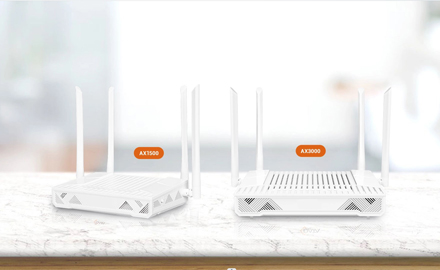Optical Line Terminal (OLT) is a crucial component in a Passive Optical Network (PON), a fiber-optic communication system that enables the delivery of broadband services. OLTs play a key role in managing and controlling the data traffic between the service provider's central office and the Optical Network Units (ONUs) or Optical Network Terminals (ONTs) located at the customer premises. There are various types of OLTs, each designed to meet specific requirements and standards in different network architectures. In this comprehensive overview, we'll delve into the types of OLTs, their functionalities, and their significance in modern optical communication networks.

1. Classifications based on PON Standards:
OLTs are categorized based on the PON standards they adhere to. The most common PON standards include:
- Gigabit Passive Optical Network (GPON): GPON is one of the most widely deployed PON technologies, offering high downstream and upstream bandwidth. GPON OLTs are designed to support various services, including broadband internet, voice, and video.
- Ethernet Passive Optical Network (EPON): EPON, also known as IEEE 802.3ah, leverages Ethernet technology for PONs. EPON OLTs provide high-speed data transmission and are commonly used for business and residential applications.
2. Modular vs. Fixed Configuration OLTs:
- Modular OLTs: These OLTs feature a modular design, allowing network operators to scale their infrastructure by adding or removing modules as needed. Modular OLTs offer flexibility and easy expansion, making them suitable for evolving network requirements.
- Fixed Configuration OLTs: In contrast, fixed configuration OLTs have a predetermined number of ports and cannot be expanded beyond their initial capacity. They are cost-effective and simpler to deploy but may require a full hardware replacement for expansion.
3. Centralized vs. Distributed OLT Architectures:
- Centralized OLTs: In a centralized architecture, a single OLT serves multiple ONUs. This design is cost-effective and straightforward but can pose challenges in terms of scalability and reliability.
- Distributed OLTs: Distributed OLTs distribute the functionality of a traditional OLT across multiple physical locations. This approach improves scalability and redundancy but may introduce additional complexities in network management.
4. OLTs with Wavelength Division Multiplexing (WDM) Capabilities:
- WDM-PON OLTs: Some OLTs support WDM, allowing multiple wavelengths to be transmitted over a single optical fiber. This enhances network capacity and facilitates the coexistence of different PON standards on the same fiber infrastructure.
5. Smart OLTs and Software-Defined Networking (SDN):
- Smart OLTs: With advancements in technology, OLTs are becoming more intelligent and capable of advanced features such as dynamic bandwidth allocation, Quality of Service (QoS) management, and traffic optimization.
- SDN-enabled OLTs: OLTs integrated with SDN technology provide programmability and central control, allowing network operators to dynamically allocate resources and optimize network performance.
6. Security Features in OLTs:
- Security-enhanced OLTs: As security is a paramount concern in network infrastructure, some OLTs are equipped with advanced security features such as encryption, authentication, and access control to protect against potential cyber threats.
In conclusion, Optical Line Terminals play a pivotal role in the efficient functioning of Passive Optical Networks. The choice of OLT type depends on factors such as network size, scalability requirements, and the specific PON standard adopted. As technology continues to evolve, OLTs are likely to incorporate more intelligent features, supporting the ongoing development of high-speed and reliable optical communication networks. Understanding the various types of OLTs is crucial for network planners and operators to make informed decisions and ensure the optimal performance of their fiber-optic communication systems.
 The Difference Between AX1800 ONU and AX3000 ONU
The Difference Between AX1800 ONU and AX3000 ONU
 How are Huawei OLTs Classified?
How are Huawei OLTs Classified?
 The Future Trend of Optical Line Terminals (OLTs)
The Future Trend of Optical Line Terminals (OLTs)
 The Difference Between ONU and ONT
The Difference Between ONU and ONT